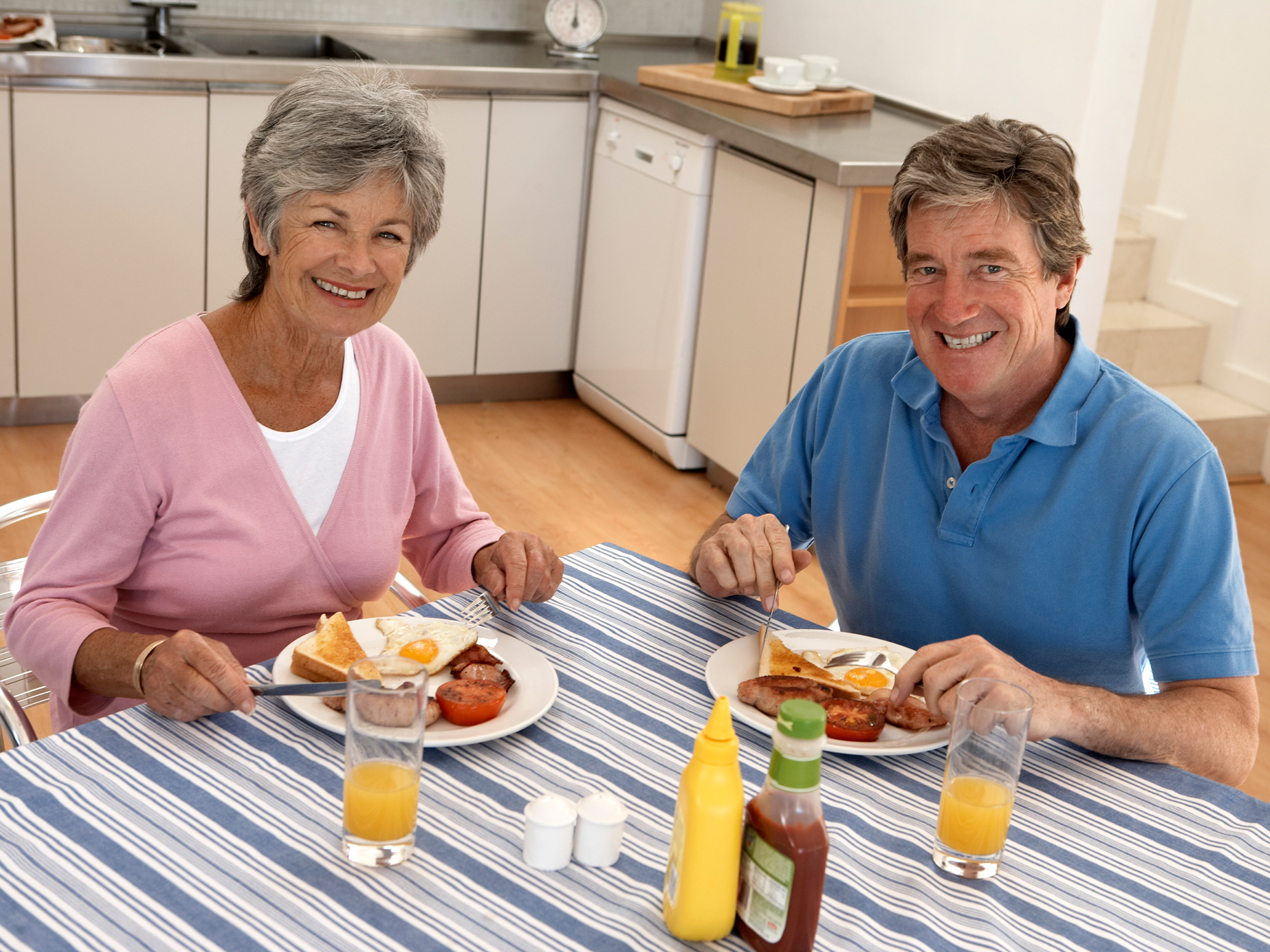Get Easy Health Digest™ in your inbox and don’t miss a thing when you subscribe today. Plus, get the free bonus report, Mother Nature’s Tips, Tricks and Remedies for Cholesterol, Blood Pressure & Blood Sugar as my way of saying welcome to the community!
‘When’ you eat your protein matters to strengthen aging muscles

Many people fear ending up in a nursing home, unable to care for themselves more than they fear death itself.
And, is it any wonder when you consider the isolation, lack of independence and decline in health and happiness that many nursing home residents experience?
Falls are the biggest reason why seniors wind up in nursing homes, with one in three adults 65 and older falling every year, according to the CDC.
Yet, there’s no doubt that many of these falls could be prevented and their subsequent nursing home stays by maintaining strength.
When you hear, the word strength, you probably immediately think of exercising, weight lifting and physical therapy.
Yet, new research is showing that staying strong in your senior years is just as much about what you eat — and maybe even more about when you eat it…
Your muscles’ building blocks
All your body’s tissues, including your muscles, are composed of proteins, which consist of amino acids. If your protein intake decreases, you lose muscle mass.
Now, scientists at McGill University Health Centre have now found it’s not just about eating enough protein, but also about when you eat it.
According to the researchers, “Many seniors, especially in North America, consume the majority of their daily protein intake at lunch and dinner. We wanted to see if people who added protein sources to breakfast, and therefore had balanced protein intake through the three meals, had greater muscle strength.”
They followed nearly 1,800 people aged 67 – 84 for three years, reviewing their protein consumption patterns to establish links with variables such as strength, muscle mass or mobility.
And, the results were impressive.
People who consumed protein in a balanced way during the day had more muscle strength than those who consumed more during the evening meal and less at breakfast. However, the distribution of protein throughout the day was not associated with their mobility.
So clearly, if you want to maintain your strength as you age, you should be sure to include protein at each meal.
Protein-rich meal options
Adult men need about 56 grams a day while adult women need about 46 grams a day. You want to spread these equally across breakfast, lunch and dinner.
Let’s take a look at some ways you can include protein in each meal.
Breakfast options
- Eggs – Whether an omelet or sunny side up, eggs are a great source of good protein.
- Greek Yogurt – Add fruit and granola for a healthy breakfast parfait.
- Peanut Butter – Add it to your smoothies, oatmeal or slather on protein toast for an extra boost.
- Cottage Cheese – This old-school superfood is great with with berries or even toast for a morning protein kickstarter.
- Quinoa – Skip the oatmeal and go for this healthy slow-carb instead. Cook it in milk and add cinnamon for a special treat. Try this recipe for quinoa fried rice for lunch or dinner too.
Lunch and dinner options
- Protein Salad – Top your green salad with a boiled egg, almond slivers, grilled chicken or chickpeas to amp up the protein power. Just adding an egg to your salad can give you a 400% nutrient boost.
- Bean Soup – Make a vegetable soup with half-cup of cooked beans, like black beans, kidney beans, or lentils for an extra 6 to 9 grams of protein, depending on the bean type.
- Poultry – Skinless chicken and turkey slices make for tasty sandwiches, or you can add them to an entree that includes rice or steamed vegetables.
- Ground Beef – Use 90% or leaner ground beef to bulk up grated veggies or beans, or add it to a taco salad.
- Fish and Shellfish – Aim for at least two 3.5 oz. servings a week of fish or shellfish. You can even keep cans of salmon on hand to make tasty salmon cakes.
So, if you want to avoid the nursing home, use the tips above to get a protein boost with each meal and give your muscles the building blocks they need to keep you strong for life.
Sources:
- Falls Lead The Path Toward Nursing Homes — The Huffington Post
- Eating protein three times a day could make our seniors stronger — McGill University Health Centre
- Protein: Are You Getting Enough? — WebMD












